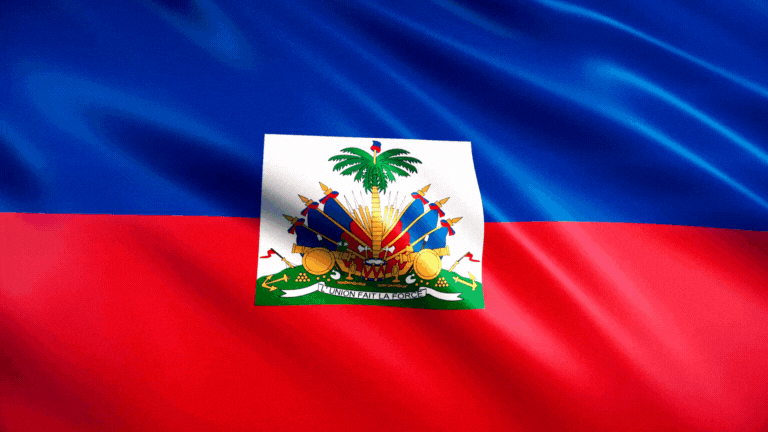Please be aware that this article may contain links to products and services we recommend. If you click on any of these links, we may earn a commission at no extra cost to you. We only endorse products and services that we believe will add value to our readers. Learn more here.
Haiti Flag: History & Symbolism
Hack The Quiz
5/8/20242 min read
This article explores the history and symbolism of the Haiti flag, highlighting Haiti’s location in the Caribbean and explaining how the flag’s design represents the nation’s independence, unity, and resilience.
Where is Haiti?
Haiti is located in the Caribbean on the island of Hispaniola, which it shares with the Dominican Republic. The country is bordered by the Caribbean Sea to the south and west and the Atlantic Ocean to the north. Known for its mountainous landscapes, Haiti was the first country in Latin America and the Caribbean to gain independence from colonial rule.
Haiti declared independence from France on January 1, 1804, after a successful revolution led by enslaved Africans, making it the world’s first Black-led republic. The national flag, adopted shortly after independence, has since been a symbol of the country’s fight for freedom and its enduring strength.
The History of the Haiti Flag
The Haitian flag was first created on May 18, 1803, during the Haitian Revolution. According to tradition, revolutionary leader Jean-Jacques Dessalines tore the French tricolor flag, removing the white stripe, which represented French colonial rule. The remaining blue and red stripes were sewn together to form a new flag, symbolizing the unity of Haiti’s Black and mixed-race populations in their struggle for freedom.
The current design of the flag, which includes the national coat of arms, was officially adopted in 1843. The coat of arms represents Haiti’s readiness to defend its independence and sovereignty.
Breaking Down the Haiti Flag’s Design
The flag of Haiti consists of two horizontal bands of blue and red, with the national coat of arms featured in the center. Each element of the flag carries symbolic meaning tied to Haiti’s history and ideals.
Let’s break down the elements of the flag:
The Blue Stripe
The blue stripe on the top of the flag represents the Black population of Haiti, as well as the values of liberty and unity. It also symbolizes the vast sky and hope for a prosperous future.
The Red Stripe
The red stripe on the bottom represents the mixed-race population of Haiti. Red also symbolizes the blood shed during the revolution and the courage of the Haitian people in their fight for independence.
The Coat of Arms
The national coat of arms, located in the center of the flag, features a palm tree symbolizing freedom, with a Phrygian cap (a symbol of liberty) perched on top. The arms also include cannons and flags, symbolizing Haiti’s readiness to defend its independence. Below the coat of arms is a banner that reads "L'Union Fait La Force" (Unity Makes Strength), reflecting the nation’s commitment to unity.
Final Thoughts
The flag of Haiti is a powerful symbol of the country’s independence, unity, and resilience. The blue and red stripes represent the unity of Haiti’s Black and mixed-race populations, while the national coat of arms emphasizes the nation’s readiness to defend its freedom and sovereignty.
Since its adoption, the flag has been a source of pride and national identity for the Haitian people, flown during important events such as Haiti’s Independence Day on January 1 and during international gatherings. It serves as a reminder of Haiti’s revolutionary past and its continued strength as a nation.
Expand your mind ...
Explore trivia that broadens your understanding and knowledge of the world.
WE ARE HERE FOR YOU
JOIN US and hack the quiz
info@hackthequiz.com
© 2024. All rights reserved.



